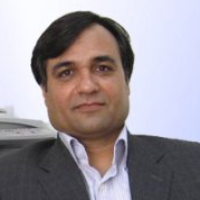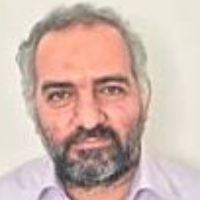Enhancing EEG Components in Adolescents With ADHD Using Transcranial Electrical Stimulation: A Randomized-active Controlled Study
Transcranial electrical stimulation (tES), including transcranial direct current stimulation (tDCS) and transcranial random noise stimulation (tRNS), can improve neuropsychological and cognitive deficits in attention deficit hyperactivity disorder (ADHD). Here, we investigated the effectiveness of various tES modes combined with working memory training in children and adolescents with ADHD.
Participants in this study consisted of a cohort of 13- to 17-year-old adolescents (N=45) who were diagnosed with ADHD in 2018. They were randomly assigned to three groups: tDCS, tRNS, and the active control (sham). The three groups received five sessions of tES either as an intervention or sham on the left and right prefrontal areas (F3 and F4). In addition to tES, dual n-back training was used in the three groups. The Wechsler’s digit span subtest and resting state electroencephalography (EEG) data were collected before and after brain stimulation.
Analysis of variance showed significant differences between the groups in some EEG channels (P=0.05). The absolute power analysis of the brain waves data in the pre-test and post-test phases reveals that the tDCS group has the greatest changes compared to the other two groups and that most changes in the absolute power related to theta, delta, and alpha bands were found in the frontal and occipital regions.
Based on the results, we concluded that tES over the prefrontal area induced cortical changes in children and adolescents with ADHD. Thus, it seems that various methods of tES can be used in combination with other common types of intervention to treat ADHD.
-
Developing a Conceptual Model of the Safe (Secure) Teacher: A Grounded Theory Study
Kiana Fereidoni, Jalil Fathabadi
Research in School and Virtual Learning, -
Eye Movements during Sentence Processing in High-Functioning Autistic Children Compared to Neurotypical Peers: An Eye Tracking Study
Faezeh Dehghan, Mehdi Alizadeh Zarei, Reza Khosro Abadi, Hashem Farhangdost, Amirali Soltani Tehrani, Mohamadtaghi Joghataei*
Basic and Clinical Neuroscience, Special Issue -
Structural Balance of Resting-State Brain Network in Attention Deficit Hyperactivity Disorder
Ruzbeh Fakhari, Alireza Moradi, Reza Ebrahimpour*,
Basic and Clinical Neuroscience, Special Issue -
Low-frequency repetitive transcranial magnetic stimulation mitigates working memory deficit and cortical malondialdehyde besides preservation of dendritic spines in valproic acid-induced model of autism spectrum disorder
Masoud Afshari, Mehrdad Roghani, Hamidreza Pouretemad, *
Journal of Basic & Clinical Pathophysiology, Winter-Spring 2024 -
Meta-Analysis of the Effectiveness of Developed Programs to Improve the Quality of Teacher-Student Relationship
Fateme Jafarpoor, Mohammadali Mazaheri *, Saeed Ghanbari, Jalil Fathabadi
Education Journal, -
The effect of wearing a face mask during the covid-19 pandemic on face perception in children with autism spectrum disorder
Ghazal Golkar, Khatereh Borhani*,
Journal of Cognitive Psycholog,




